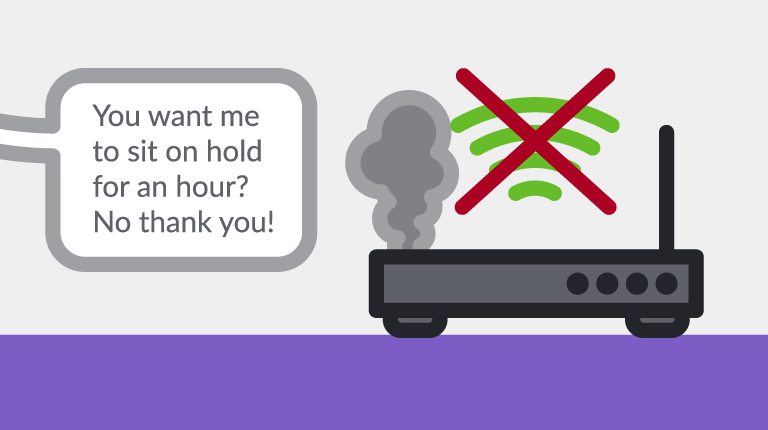I admit it. I can be pretty impatient at times, so the other day when my son came downstairs to find me yelling at my computer with the remote in my hand, he wasn’t entirely surprised. But it was still a humbling moment.
Let me back up a bit here and explain. The picture quality on TV had been slowly deteriorating, but only on certain channels — this was clearly a cable issue. So, being the fix-it-myself type, I tried all the normal tricks. Checked all wires and cables, looked at all my device boxes and made sure no error lights were on, verified that the picture was indeed clear on streaming content and other connected devices.
When I exhausted all those options, I jumped online and slowly walked through the troubleshooting steps my cable provider recommended. Painfully, I had already tried the majority of them. The rest required long reboots of the various boxes attached to the TV. After spending 30 minutes walking through all that, the problem was still there and the company left me with the only remaining option: schedule a technician. But with no link or option to do that through the chatbot or on the web page. My only option was to call and start over.
So there I stood, yelling at the online chatbot (which obviously couldn’t hear me), complaining that it had just wasted my time.
We’re all guilty of using customer service channels as an outlet for frustration. When your wifi cuts out; when your expensive new speaker won’t sync with Spotify; when your laptop shuts down for no apparent reason—each of these scenarios can make your blood boil (whether it’s reasonable or not) and customer service departments get caught in the line of fire.
To that end, Americans have infamously adversarial relationships with customer service departments. And as it turns out, during certain emotion-laden conversations there are instances where people don’t actually want to speak with a human to find the answer — they just need a minute to vent or some non-person to speak loudly to.
A new Harris poll conducted with Interactions shows that half of American millennials would prefer to deal with a virtual assistant, or a computer program driven by artificial intelligence, in instances that are considered embarrassing (like discussing late bill payments). It’s not just about avoiding embarrassment either: people are more willing to speak with a computer if they are upset or in a bad mood.
In contrast, 65% of Americans say they want to talk with a human, not a computer, if they feel they can negotiate a better agreement with the company or “bend the rules.” Another time when AI is better? When dealing with issues that involve personal information. According to the study, about two in five Americans cited they are comfortable with a human not being involved when they are providing sensitive information such as account information or social security numbers.
In the same study, a full 76% of Americans stated that they would be comfortable with a human not being involved when interacting with a company, with Millennials leading the pack! (88% of Millennials vs. 74% of Gen Xers and 65% of Boomers). Now, I can’t be certain they all need to complain, but maybe they want that option.
While this data is definitely interesting, it’s also crucial for companies that are designing or updating their customer care strategies. Above all, research like this shows that Americans are looking for flexible, adaptable solutions that can provide AI that truly understands them (no matter the channel). And maybe just to be there to listen when they need to vent.
There’s a lot to keep track of when designing your customer care strategy – and consumer preferences are changing fast. Read all the latest in our latest ebook: Artificial Intelligence and the Customer Experience.





